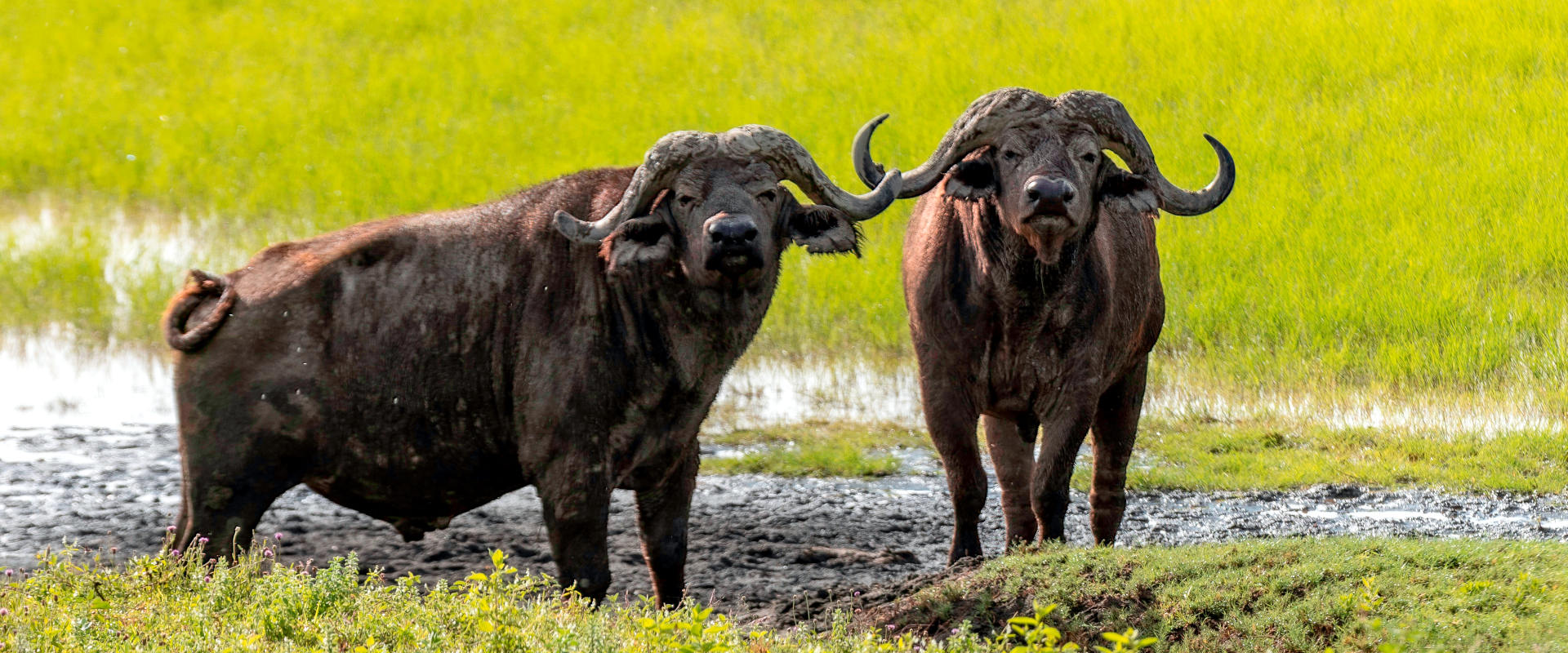
Mikumi National Park
Located in the remote territory of southern circuit, Mikumi National Park often draws comparison from Serengeti National Park because of its diverse and similar landscape. Once you get inside the park, the savannah fields dotted with acacia, baobab, and tamarind trees will remind you of the Serengeti landscape. It can easily be dubbed as among the most underrated parks in Tanzania. Covering an area of 3,230 sq km, Mikumi is not the largest of the national parks, nor the most game rich. Coupled with the fact that it is located in the opposite corner of preferred northern circuit, it is overlooked by majority of the tourists. Thus often times it feels remote and isolated. But it is rather this emptiness and landscape diversity what makes Mikumi worthy of a visit. Mikumi is bordered by flood plains and mountain ranges from both sides. The Uluguru Mountains and its green forest lands stand in the east, while in the southwest it is bordered with Udzungwa Mountains and Uluguru Mountains. To the south, Mikumi borders with the famous and one of the only game hunting areas in Tanzania, the Selous Game Reserve. Mikumi when combined with Selous Game Reserve forms a unique ecosystem in itself and these sundry parks when combined, make Mikumi stand out from the rest in offering a unique and varied background for wildlife photography.
Even though the wildlife is sparse when compared to that its northern circuit counterparts, it is nevertheless profound. All of members of the Big Five of Africa -- African bush elephant, African leopard, Cape buffalo, African lion, and rhinoceros -- are spotted in this park. Mikumi borders with Selous Game Reserve from the south and shares some of its flood plains and lakes. Hippopotamus and other life forms can be seen around such water bodies. Another common species are elephants and giraffes that use their tall structure to feed themselves from the tamarind and other trees. During the rainy season, you can expect to see more than 400 bird species including migration species from Europe and other parts of the world. Buffalos, zebras, impalas, baboons, warthogs, waterbucks, and the critically endangered African wild dog that resemble hyenas are also spotted in the park.
Although charter flights are readily available via booking through tour companies, it is easily reachable from Dar Es Salaam by following the highway that crosses the park. The best time to visit the park is during the dry season in the months of May through October when there’s a water scarcity in the entire park and the wildlife and forced to come out of their comfort zone.
You can take a whole day game drive in this park, although most people combine it with a visit to the adjacent Selous Game Reserve. Apart from that, there are three to four trails for walking safaris. More activities can be organized inside of this park, albeit that’d require consulting with your tour company. But all in all, this is a park worth exploring and investing some time in.